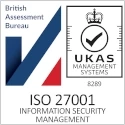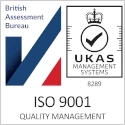15
+
YEARS OF
EXPERIENCE
1000
+
SUCCESSFUL
Projects
80
+
Satisfied
Clients

The concept of a Modern Workplace has evolved significantly over the past few years, especially with advancements in technology, changing work environments, and the global shift towards digital transformation. In today’s fast-paced, highly connected world, businesses are increasingly adopting modern workplace solutions to enhance productivity, collaboration, and employee satisfaction.
What is a Modern Workplace?
A Modern Workplace refers to a work environment that integrates the latest technologies and tools to enable employees to work efficiently, collaborate seamlessly, and stay productive, regardless of their physical location. It emphasizes flexibility, mobility, collaboration, and a strong focus on digital tools that facilitate the work process. A modern workplace isn’t just about the technology; it’s also about creating a culture that supports new ways of working, such as remote work, hybrid teams, and real-time collaboration.
With the rise of cloud computing, artificial intelligence (AI), collaboration platforms, and digital communication tools, the modern workplace has become a digital-first environment. It empowers employees to work from anywhere, collaborate in real-time, and access the resources they need to do their jobs efficiently.





Key Features of a Modern Workplace
The modern workplace thrives on cloud-based collaboration tools that facilitate seamless communication and teamwork. These tools allow teams to collaborate on projects, share documents, and track tasks in real-time, regardless of their location. By moving operations to the cloud, organizations eliminate the need for traditional infrastructure like on-premises servers, making it easier to scale operations and innovate quickly. Cloud tools such as file-sharing platforms, real-time document editors, and video conferencing services help streamline workflows and keep teams connected, no matter where they are.
Another essential feature of the modern workplace is flexibility. Remote work has become a mainstay, allowing employees to work from the comfort of their homes, at coworking spaces, or while traveling. Hybrid work models, where employees alternate between remote work and in-office attendance, are also gaining popularity. This flexibility not only helps businesses lower costs associated with office space but also allows them to tap into a broader talent pool, hiring employees from different locations or even different countries. The ability to work from anywhere offers a level of convenience and work-life balance that has become highly desirable to today’s workforce.
Effective communication is crucial to any workplace, and the modern workplace places a strong emphasis on communication tools that integrate with other systems and support various modes of interaction. Employees use platforms like Microsoft Teams, Slack, and Zoom to chat, conduct video calls, share files, and keep in touch with colleagues and clients. These tools help bridge the gap between remote and in-office workers and foster an environment of collaboration and transparency.
Security is another critical feature of a modern workplace. As more businesses embrace digital tools and cloud services, protecting sensitive data has become more important than ever. A modern workplace relies on a combination of advanced security protocols to safeguard information. Encryption, multi-factor authentication (MFA), and secure VPN connections are among the methods used to ensure that data remains protected, especially when employees are accessing it from remote locations. A robust cybersecurity strategy is vital for preventing breaches and maintaining the integrity of business operations.
Cloud Technologies
Advanced cloud technologies to enhance scalability, performance, and collaboration, transforming how your business operates.Moving to the Cloud
Seamless migration to the cloud, ensuring business continuity, enhanced security, and optimized performance for your team.IaaS and PaaS
Flexible IaaS and PaaS solutions that provide scalable infrastructure and platforms to accelerate your business growth.
Benefits of a Modern Workplace
Adopting a modern workplace model brings numerous advantages to businesses. The most immediate benefit is increased productivity. With cloud tools and collaboration platforms, employees can access the resources they need quickly and work together seamlessly, even when they’re miles apart. Communication tools such as video conferencing and messaging platforms ensure that teams stay connected and can resolve issues in real-time, reducing delays and enhancing the speed of decision-making. This level of connectivity helps businesses remain agile and responsive to market demands.
Cost efficiency is another significant benefit. Modern workplaces allow businesses to reduce expenses related to physical office spaces, utilities, and hardware. With remote work and flexible office arrangements, organizations can downsize their office spaces, cutting overhead costs. Cloud-based solutions also replace traditional server infrastructure, which can be expensive to maintain and upgrade. This shift allows businesses to adopt subscription-based models, making it easier to scale resources up or down as needed, further optimizing costs.
Conclusion
The modern workplace represents the future of work—an environment that leverages the latest technologies to enhance collaboration, flexibility, and productivity. As businesses adopt cloud-based tools, integrate AI, and embrace remote and hybrid work models, they are positioning themselves to thrive in a fast-evolving digital world. For IT professionals, understanding the components of a modern workplace and the benefits it brings is crucial in supporting the successful implementation of these technologies and ensuring long-term business success. By embracing the modern workplace, organizations can stay competitive, foster innovation, and create an engaging environment for their employees.

answer time
satisfaction
score
on initial call
same business
day









